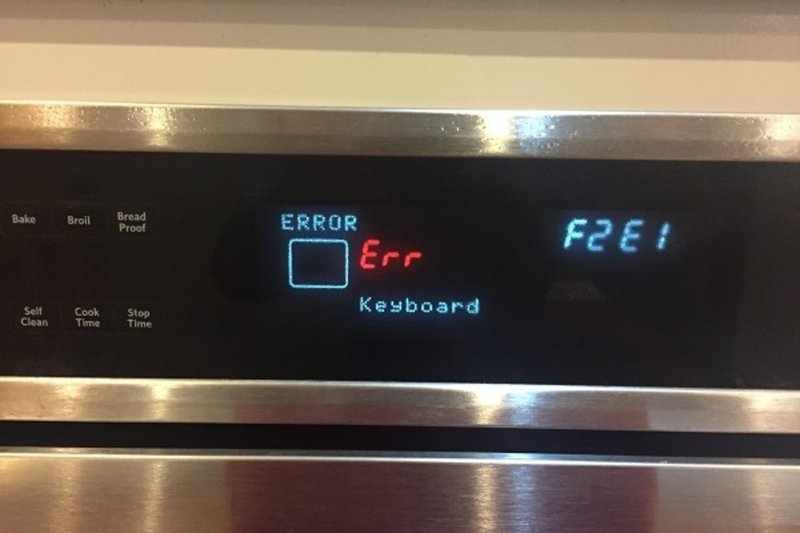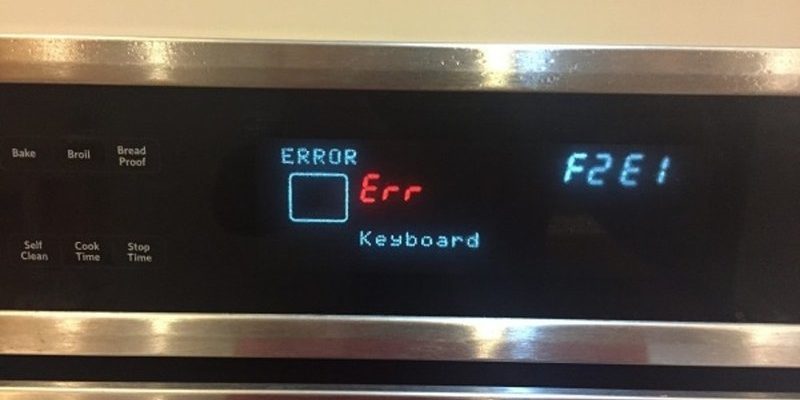
Imagine your oven as a car. If the car’s speedometer is broken, you wouldn’t know how fast you’re going, right? Similarly, if the oven’s temperature sensor isn’t functioning properly, it can’t accurately monitor and adjust the heat. This could potentially lead to your oven overheating, which poses safety risks. So, when the F2 code appears, it’s your oven’s way of saying, “Hey, something’s not quite right here!”
Understanding the F2 Error Code
So, what’s going on behind the scenes when an F2 error code pops up? Think of your oven’s temperature sensor as its thermometer. This tiny component keeps tabs on how hot things are getting inside. If it malfunctions, the oven might heat up too much or too little. An F2 error often means that the sensor is either sending incorrect information to the main control board or not communicating at all.
Now, you might be wondering how big of a deal this really is. To put it in perspective, not knowing the actual temperature of your oven is like trying to bake cookies at an unknown temperature. They could end up burnt or undercooked. While it might not seem catastrophic at first, letting the problem linger could lead to more serious issues like uneven cooking or, in the worst case, a potential fire hazard if the oven overheats.
If you see this error, it’s usually best to err on the side of caution. Pause your cooking plans and take a closer look at your appliance. The F2 code isn’t a mere suggestion; it’s a call to action. Ignoring it could be like ignoring a flat tire on your car—eventually, it’ll cause more trouble down the road.
Causes of the F2 Error Code
You might ask, “Why did my oven decide to throw this error code at me?” There are several potential culprits. A common issue is a faulty temperature sensor, which stops communicating correctly with the control board, much like a dropped phone call. Over time, wires can become worn, connections can loosen, or the sensor itself can just give up the ghost.
Another possibility is a glitch in the control board. This is the brain of your oven, where all the commands are processed. If the board goes haywire, the whole operation can go south. Picture your oven trying to solve a puzzle with missing pieces—it just won’t work right.
And let’s not forget power surges. A sudden spike in electricity can confuse the oven’s electronics, much like a sudden gust of wind knocking a hat off your head. These surges can scramble the control board’s memory, leading to error codes popping up out of nowhere.
What To Do Next
Here’s the plan: First, try resetting your oven. Just like rebooting a frozen computer, turning it off at the main power source for a couple of minutes might clear minor glitches. If the error code persists after powering it back on, further action is required.
Call in a professional. While DIY repairs can be fulfilling, an oven isn’t the best place to practice your handyman skills unless you’re confident in electrical work. An experienced technician can diagnose whether the temperature sensor, wiring, or control board needs attention.
Lastly, to prevent future error codes, consider using a surge protector to shield your appliance from unpredictable power spikes. And remember, regular maintenance can keep your oven humming happily along, just like taking your car for regular oil changes.
Is It Safe to Use the Oven Until It’s Fixed?
Let’s get straight to the heart of the matter—is it safe to use your oven while it’s flashing the F2 error code? The short answer is: it’s risky. Keep in mind that the purpose of the error code is to alert you to a potential problem that could compromise safe operation.
Imagine using a broken umbrella in a rainstorm. You might stay dry for a minute, but eventually, you’ll end up soaked. Without an accurate temperature reading, your oven could overheat, potentially leading to dangerous situations like fires. It’s better to be safe than sorry, so using your oven without addressing the error isn’t advisable.
If you’re in the middle of cooking and the F2 code appears, turn off the oven and let it cool down. Consider using alternate cooking methods, like a microwave or stovetop, until the issue is resolved. Don’t let convenience trump safety in this scenario.
Tips for Avoiding Future Errors
Once you’ve dealt with the pesky F2 error code, let’s focus on keeping it—and others—at bay in the future. A little proactive care can go a long way. First, always use a surge protector to guard against electrical spikes that could damage your appliance’s sensitive components.
Regular cleaning and maintenance of your oven can also prevent future issues. Think of it as spring cleaning for your kitchen. Keeping the oven interior clean ensures optimal performance and reduces wear on parts like the temperature sensor. Also, periodically inspect visible wiring for signs of damage, like fraying or corrosion, and address any issues promptly.
Finally, consider scheduling annual check-ups with a qualified technician. This is akin to getting a yearly physical at the doctor’s office—it helps catch little problems before they become big headaches. A professional can provide insights and maintenance tips specific to your oven model, ensuring it operates safely and efficiently for years to come.
